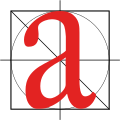Talk:Ogonek
Appearance
| This article is rated Start-class on Wikipedia's content assessment scale. It is of interest to the following WikiProjects: | ||||||||||||||||||||||||||||||||||
| ||||||||||||||||||||||||||||||||||
|
|
|
This page has archives. Sections older than 730 days may be automatically archived by Lowercase sigmabot III when more than 2 sections are present. |
What's missing?
[edit]Thanks. Tells me everything except how to pronounce it -- what I came here to learn. 155.213.224.59 (talk) 17:23, 17 February 2015 (UTC)
- Of course it doesn't, as it differs between languages. Double sharp (talk) 08:12, 24 January 2018 (UTC)
The m with ogonek is in New Marshallese but it ISN'T in the list of ogonek letters. FIX THIS! PhoenixSummon (talk) 00:32, 26 December 2019 (UTC)
- The new Marshallese orthography uses a cedilla (where the line curves to the left as it descends) rather than an ogonek (where the line curves to the right); it is already listed on the Cedilla page. - LaetusStudiis (talk) 21:19, 3 September 2021 (UTC)
- Something else that's missing and would be nice would be some history, i.e. oldest known usage, when it was adopted by major language standardisation efforts and which. It's the type of information that often is lacking in relation to script and punctuation articles. Thanks, —PaleoNeonate – 00:57, 4 June 2022 (UTC)
Ogonek
[edit]"Ogonek" is in Polish,in English it is ,,tail" 205.201.55.68 (talk) 12:04, 20 May 2022 (UTC)
Why has no one corrected it yet? Kittens are fluffy and cute (talk) 09:27, 31 May 2022 (UTC)
- Looks like the word ogonek is accepted in English. Also used in (English language) Unicode name for this diacritic. Note that "tail" could be more confusing. DePiep (talk) 09:37, 31 May 2022 (UTC)


